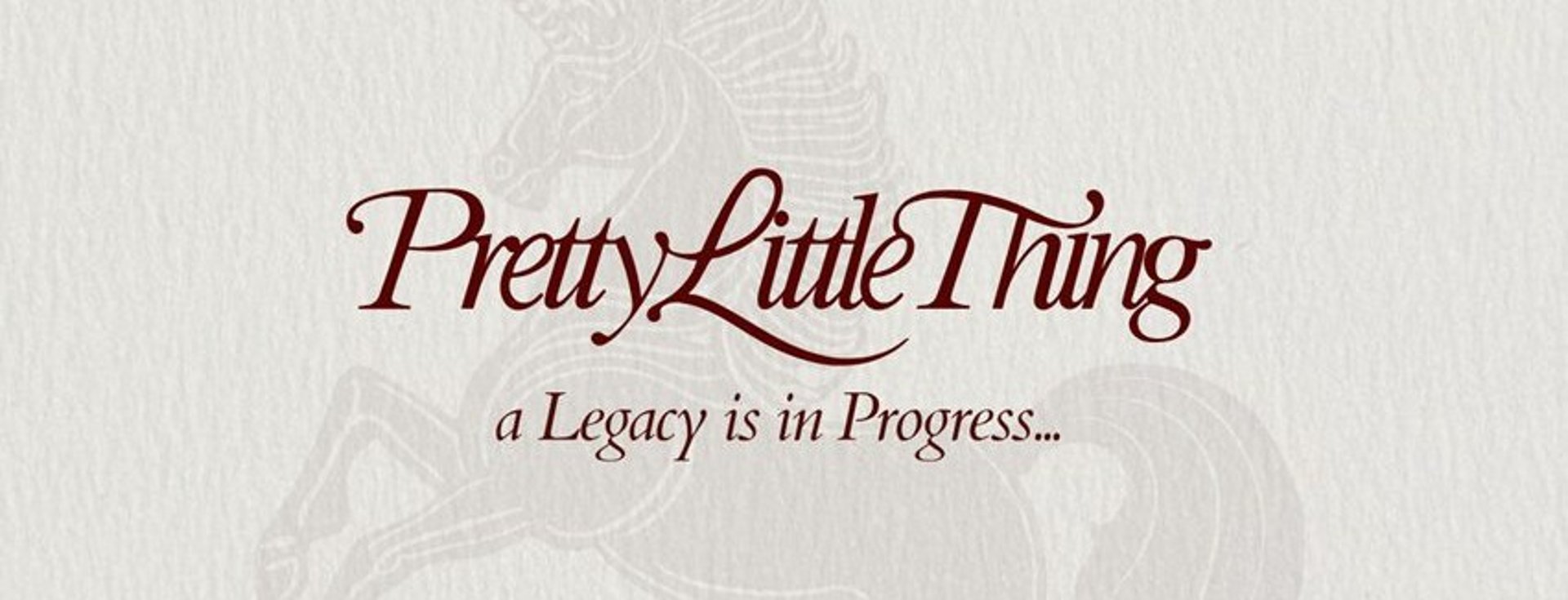
PrettyLittleThing Rebrand: Yay or Nay?
Fast fashion brand PrettyLittleThing has announced a rebrand to mark a new "elevated era". But what does this mean, and will it work?
Michele Li-Fay
3/7/20253 min read
In March 2025, fast fashion brand PrettyLittleThing unveiled a rebrand, declaring "a Legacy is in Progress". Gone is the bubblegum pink colourway with bold sans serif font and flying unicorns; the rebrand demonstrates what PLT are calling "an elevated new era". It features a rich colour palette of burgundies and neutrals, with a new cursive serif typography, and even a PLT crest to conjure up association with the iconic luxury fashion houses like Burberry and Gucci. The unicorn has remained, but only as a faint backdrop to the new branding.
Are you confused about why PLT deemed it necessary to undergo this transformation? And will this rebrand work? Here are our thoughts on the matter.
Why Rebrand?
According to Retail Gazette, this was largely due to the return of former PLT boss Umar Kamani in September 2024. He is said to have "shaped a vision that captures the essence of modern sophistication", and apparently engaged in direct consumer feedback and dialogue that brought about this rebrand.
The reality is fast fashion requires large sales volume. If a dress is sold for £12, they are likely making the slimmest profit. Remember, it's not just the cost of the dress that goes into profit margin calculations; you have to take into consideration the cost of shipping, any taxes and tariffs, salary costs and so on. So when your products are sold cheaply, your only option is to sell a lot of them. And in this economy, people are spending their money on essentials, and niceties such as fashion are the first to get cut on the shopping list.
In addition, fast fashion continuously gets a bad rep when it comes to factory conditions, environmental pollution and labour controversies. We are not saying that mid and high fashion brands do not face similar questioning or contribute to wastage and pollution; however, it is well known that fast fashion brands significantly contribute to these issues. By rebranding and elevating the brand away from the fast fashion tier, it could be a way for PLT to steer clear of these issues, which hit the headlines every few months.
The Problem with the PLT Rebrand
Every brand goes through peaks and troughs, ups and downs, so if PLT want to rebrand to become more premium and as an accessible luxury brand with "the essence of modern sophistication", then fair play to them. But this rebrand cannot just be about a change in colour palette and font face; by declaring itself as entering "an elevated new era", plenty of things need to change behind the scenes. Essentially, it means having to completely change the ways of working for PLT.
Firstly, the brand name itself. PrettyLittleThing. It's cute, it's fun, it's a little naughty. In other words, perfect for the young fashionista who wants to look pretty. But if PLT wants to aim for "comprehensive elevation", whether it's design, colour or price, they are likely shooting for a slightly older demographic, perhaps mid-20s to 30s. Do these customers want to be wearing something that says PrettyLittleThing on the label?
Next, there is no beating around the bush: PLT is known for its super cheap prices and material. It's the brand for budget-conscious fashionistas who need to jump on the latest trend and even micro-trend. By elevating the prices, what happens to those fans who made PLT what it is today? They may not be able to afford this price point jump.
If you then elevate the price points, there will be an expectation of an improvement in quality. Customers will feel cheated if they have to pay double the price for the same quality of garment. This will likely require a complete change in supply chain, so buyers will need to source new factories that can make clothes with better material, better trims, better finishes and so on. Do PLT already have this in place?
Finally, you have frequency. Fast fashion brands churn out new styles weekly because that's the only way to keep up with some trends. If the pieces don't get manufactured and turned around quick enough, the trend could be out of style by the time the clothes hit the (virtual) shelves. In contrast, regular fashion brands stick to a more regular timeframe of rolling out collections. If PLT choose to go down this route, will this mean they lose out on the trend-chasing edge that made fashionistas flock to them?
Conclusion
We believe in giving all brands and businesses a chance, so we look forward to seeing how PrettyLittleThing's rebrand goes for them. If they put in the work behind the scenes and genuinely are looking for a holistic elevation of the brand, with revisions in their approach to design, supply chain management and so on, then that's great and we will be the first to give them credit. But if this is just a rebrand to allow for price elevation and marketing clout, and there is no follow-through of substance, then we believe the PLT customers--old and new--deserve much more.
Privacy Policy | Terms and Conditions
© 2025 Mpowering Solutions
